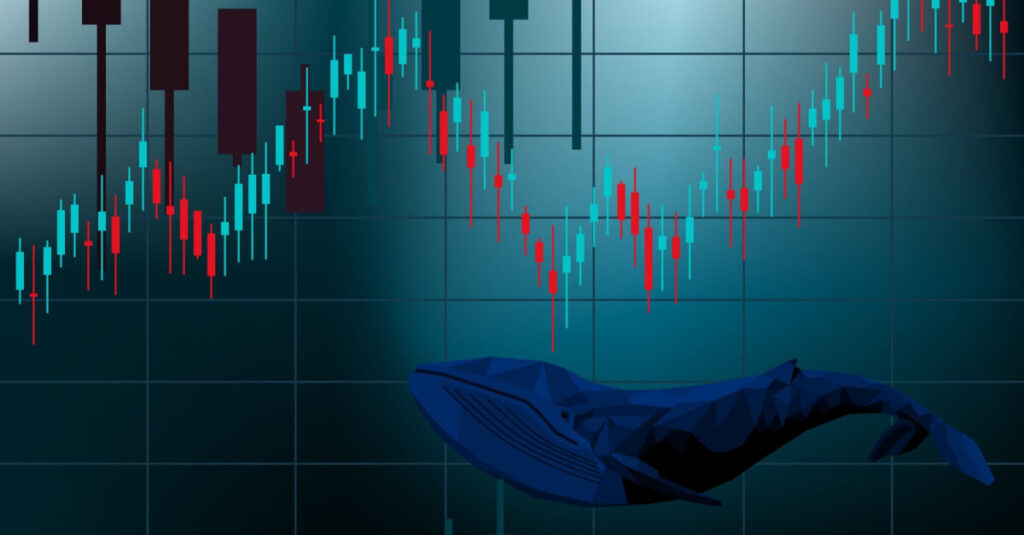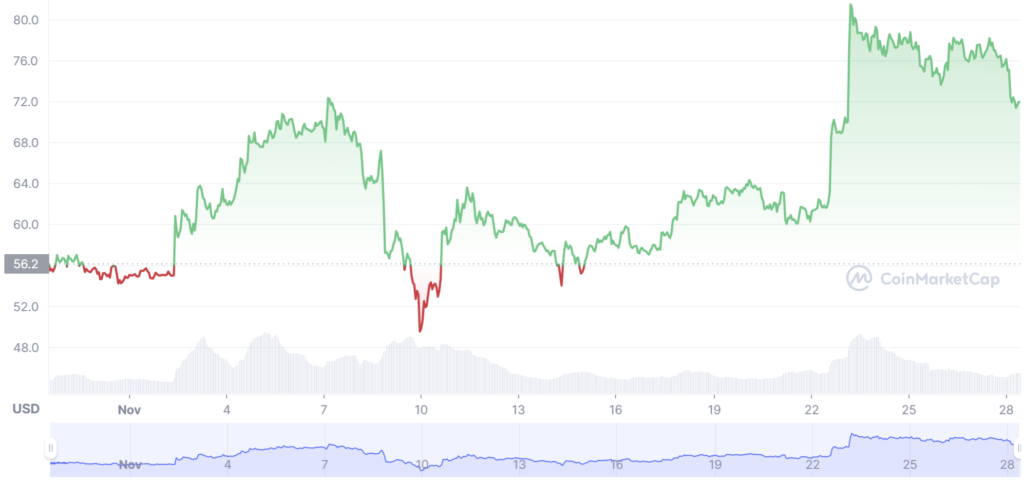
Bitcoin Whales Underwater as BTC Hits Fresh Yearly Lows
As Bitcoin posts a new yearly low, Bitcoin whales – investors that are holding more than 1000 BTC – come under pressure for the first time since March 2020.
Although markets continue to digest the FTX fallout and contagion, not all cryptos continued to fall. Dogecoin and Litecoin continued to buck the subdued market trend.
DOGE soared as fresh hopes were stirred regarding a collaboration between Vitalik Buterin and Elon Musk.
Meanwhile, Litecoin continued to reach new heights in November as investors begin to focus on the coin’s upcoming halving event.
- Bitcoin whales under stress as coin falls to fresh yearly lows
- Dogecoin bucks the downtrend recording a 30% weekly gain
- Litecoin makes gains in November as investors look to the coin’s halving
Most whales now underwater as bitcoin hits fresh yearly lows
As the market comes to terms with the collapse of FTX and continues to analyze the ongoing contagion, Bitcoin slumped to the lowest levels seen in 2022.
Early during the trading session on Nov. 22nd, Bitcoin bounced from $15,665, which is now the lowest price the coin has recorded this year. The world’s leading cryptocurrency is down 75% from all-time highs.
Although hitting retail investors hard, Bitcoin whales are now coming under increasing pressure. Bitcoin whales are defined as those that hold over 1000 BTC.
According to a report released by on-chain intelligence provider, Glassnode, November’s price action means that the majority of long-term Bitcoin whales are now sitting with unrealized losses.
In their report, the intelligence provider first highlights that there has been an increase in the average deposit size into exchanges since the collapse of the LUNA-UST project in May 2022; an indication that whales and larger institutions now compose the majority of exchange deposits.
Interestingly, the same trend was also witnessed during the end of the 2018-2019 bear market.
The mean inflow volume of Bitcoin to crypto exchanges against Bitcoin price.
While it is unclear why this is occurring, other on-chain metrics highlight that it could be the result of financial pain, as most whales are now underwater.
With spot prices reaching $16,000, for the first time since March 2020, the bulk of Bitcoin whales are now sitting with an unrealized loss.
The realized price of whale withdrawals against Bitcoin price (Glassnode).
To accompany the movement from Bitcoin whales, on-chain data also suggests that Bitcoin hodlers (long-term holders) are also beginning to move old coins.
According to the report, spending of older coins is “often a signal of reduced conviction, fear, and capitulation amongst this more experienced cohort.”
While similar characteristics were witnessed during the 2018-2019 bear market, it is clear that investors continue to reshuffle and redistribute amidst the downturn.
Dogecoin bucks the downtrend recording a 30% weekly gain
The meme cryptocurrency, Dogecoin, rallied hard during the week as speculation stirred, once again, regarding a collaboration between Elon Musk and Vitalik Buterin. The coin secured a 30% weekly increase, while the remainder of the crypto market remained subdued.
While no single event has been acknowledged as the reason for the weekly price spike, many in the industry were quick to point to a tweet from David Gokhshtein, a media personality, that was picked up by several crypto news outlets.
On Nov. 25, Gokhshtein exclaimed to his 700,000 followers that he felt “we’ll all see Vitalik [Buterin] and Elon [Musk] working together to somehow upgrade $DOGE.” With the prediction of a collaboration between Ethereum founder and the CEO of Twitter, the story excited many Dogecoin holders.
As speculation regarding an ETH/DOGE collaboration grew on social platforms, Gokhshtein subsequently highlighted on Sunday that the payments section within Twitter’s latest slide deck had been left blank.
“The payment section is missing. I think we’ll see $DOGE added in there. I’m going based on all the comments Elon’s made in the past.”
Tweet from David Gokhshtein.
Although possible, Gokhshtein was quick to point out that prices were potentially rising based on what he was describing as nothing more than a “feeling”.
Interestingly, Dogecoin’s development activity also spiked during the week, which would suggest that developers contributed a significant amount to the blockchain’s GitHub depository. In the past, there has been speculation that Dogecoin may make the transition to Proof-of-Stake, just like Ethereum.
Excitement regarding a Dogecoin payment integration resulted in the price of DOGE increasing from a weekly low of $0.07 to a weekly high of $0.10.
Price of DOGE vs USD.
Litecoin shows strength as investors look to the coin’s halving
While major cryptocurrencies have experienced a bearish November, Litecoin has, so far, recorded a 29% monthly increase. The blockchain, which was created using a copy of Bitcoin’s underlying code in 2011, has increased from October lows of $55 to $71 on Nov. 28th.
As a result of the counter market move, Litecoin surpassed both both Solana and Shiba Inu in the total market cap rankings; the coin now sits in the 13th spot, just behind the DAI stablecoin.
With the coin moving against the tide of bearish sentiment, many believe the reason lies in the coin’s upcoming halving event. Although still more than 200 days away, Litecoin tends to increase as a halving event approaches.
Like Bitcoin, Litecoin relies on a network of miners to operate. These miners are rewarded with Litecoin block rewards.
As part of the underlying infrastructure, the blockchain implements a halving event which halves the block rewards miners receive. This occurs every 4 years and results in a restriction to the overall supply of LTC.
For any asset, when demand remains constant and supply is restricted, prices increase.
Over the 8 months leading up to Litecoin’s first halving event, which took place in August 2015, LTC increased from $1.40 to over $7.
Likewise, in the lead up to the second halving event in August 2019, LTC increased from lows of $22 to over $100. As a result of this trend, many are expecting Litecoin to behave similarly for the halving event which is scheduled for August 2023.

Price chart of LTC vs USD.
To stay up to date on all things crypto, like Xcoins on Facebook, and follow us on Twitter, Instagram, and LinkedIn.

